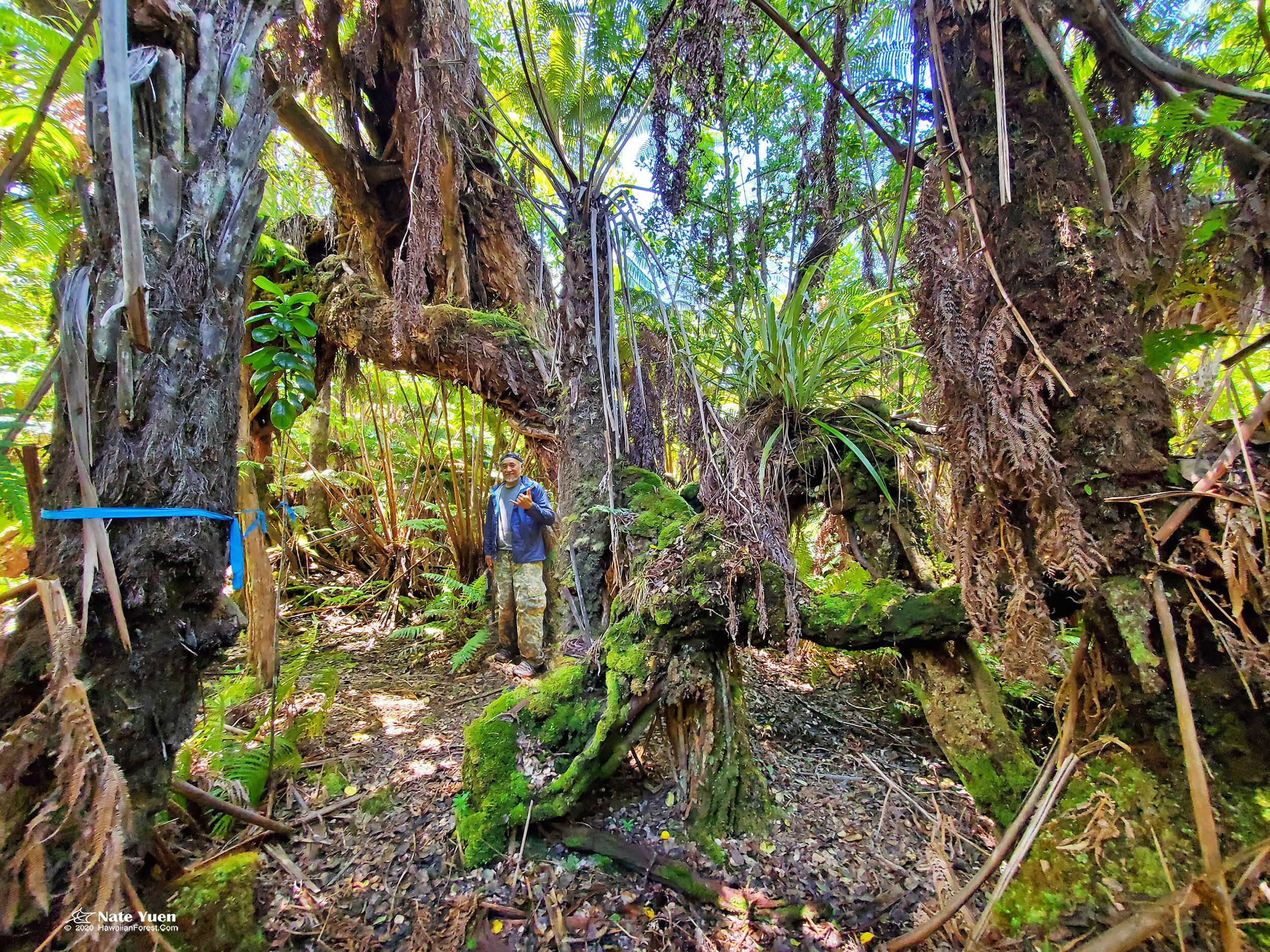Nate’s Adventures: ʻŌhiʻa Tree Complex
By Nate Yuen, Chapter Outings Chair
I went to see a big old friend who lives in Puʻu Makaʻala on Hawaiʻi Island.
My ‘friend’ is actually several friends—a huge complex of native trees and ferns—a behemoth with multiple legs. I was pleased to see them thriving and doing well.

The complex is a symbiotic community of epiphytes that forms a scaffold 15 feet above the forest floor upon which other trees grow. The complex is about 60 feet long and 30 feet wide, and reaches some 60 feet into the air. An entire other forest grows on top the scaffold.
ʻŌhiʻa is the foundation upon which other trees and ferns grow: ʻōhiʻa (Metrosideros polymorpha), ʻōlapa (Cheirodendron trigynum), kāwaʻu (Ilex anomala), pilo (Coprosma spp.), ʻōhelo (Vaccinium reticulatum), manono (Kadua spp.), paʻiniu – (Astelia spp.), hāpuʻu (Cibotium glaucum), ʻiwaʻiwa (Asplenium spp.), moa (Psilotum nudum), and several species of native mosses.
Strong wind toppled a large ʻōhiʻa tree long ago and its stout branches propped the main trunk off the ground at an angle. ʻŌhiʻa and other seedlings sprouted on the fallen tree as epiphytes along with ferns and mosses. The trunks of different trees intertwine and their roots snake down to the ground. It is fascinating to see the unique bark textures of different tree species in the complex.
Big old hāpuʻu ferns thrive in the complex. One hāpuʻu fern has a bent stipe 30 feet long. Hāpuʻu are slow growing ferns whose stipes (trunks) grow an estimated 1 foot every ten years. At 30 feet tall, the fern is about 300 years old – the complex is at least that old.
Nate Yuen is an artist/photographer/naturalist whose body of work is a confluence of hiking, conservation, and fine art photography. Each weekend you can find him hiking, backpacking, or kayaking to out-of-the-way locations to photograph Hawai‘i’s native plants and animals, many of which are rare or endangered. His goal is to showcase these biological treasures to give you a reason to protect them for future generations. You can view his art and read about his adventures at hawaiianforest.com.







